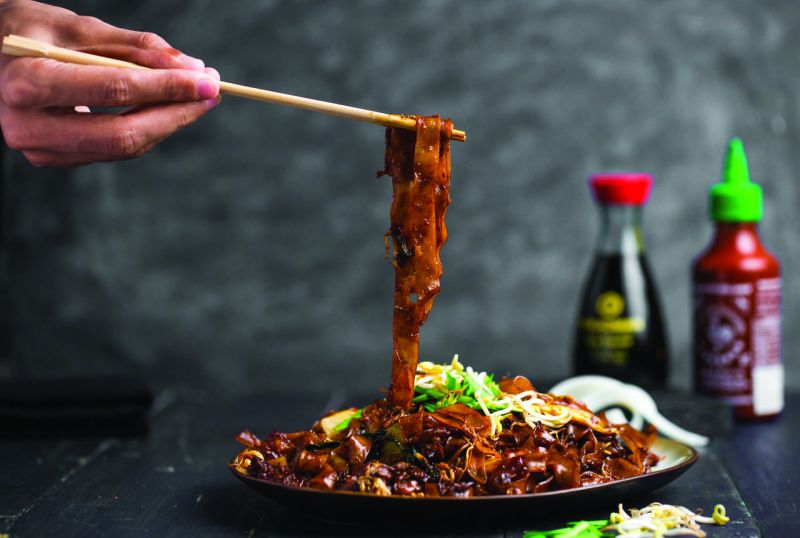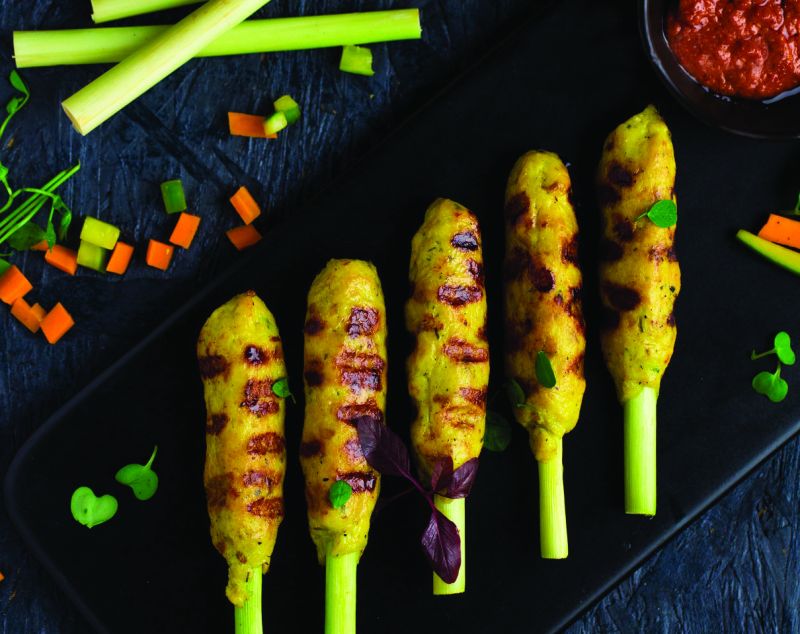Asia on a platter
A glimpse of street food from different regions of Asia can evolve into luxury when you try them out at home.
Last week, we got a sneak-peek into the world of Indian street food delicacies. However, street food is, obviously, not an all-exclusive Indian speciality. If you cross the national border and visit our neighbouring countries, it won't come as a surprise if you find a miscellany of local dishes in every nook and cranny. Chef Peter Tseng, who has travelled across most of Asia, believes that these dishes should belong in the menus of big Indian restaurants too. Having worked with some of the leading hospitality groups before moving to Dubai and, now, coming back to the Indian kitchen, he aims to cook-up inspired versions of the food he came across on his great Southeast Asian expedition. "Most of the menu is based on our trip," he says, discussing how he's taken ideas and flavours from the countries they visited and then moulded some of them into practical dishes for an Indian audience. A glimpse of street food from different regions of Asia can evolve into luxury when you try them out at home.
Char Kway Teow
A quintessential dish that comes to mind when one thinks about Malaysia and Singapore is Char Kway Teow. Kway Teow refers to the flat rice noodles, and its essence lies in the smoky flavour that is imparted due to stir frying in high heat. Diffferent vendors have their own versions and toppings of the dish, which can range from cockles to fish cakes to chinese sausages.

Ingredients
- 10mm noodles-rice stick 125gms
- Garlic chives cut into 2” length 10gms
- Bean sprouts 30gms
- Whisked whole egg 1
- Garlic peeled and chopped 10gms
- Refined sunflower oil 15ml
- Fresh red chilli paste 5gms
- Dried red chilli soaked in warm water
- for 30mins, drained and made into a paste 5gms
- Sliced chicken breast 80gms
- Kecap manis sauce 30ml
- Soya dark sauce 5ml
- Soya light sauce 5ml
- Fish sauce 2ml
- White pepper powder 2gms
- Salt 5gms
- Sugar 2gms
Method
- In a hot wok, sauté the chopped garlic, add the sliced chicken and scramble the egg. Stir fry until the chicken is cooked.
- Toss in the noodles with the other vegetables and stir fry under high heat until the noodles are soft and translucent.
- Season the noodles with kecap manis, dark soya, light soya, fish sauce, white pepper powder, salt and sugar to taste.
- Pour in the sauce mix at regular intervals in between tossing the noodles, giving it time for the noodles and the sauce to caramelise under high heat, giving it a hint of charness, which is where the secret of good Char Kway Teow lies.
- Serve immediately, garnished with chives and bean-sprouts.
SOM TUM CHAE
Literally meaning pounded salad, this dish is adapted from the Lao version of the salad ‘Tam Som’. The name of the dish is derived from two words: ‘som’ meaning sour and spicy and ‘tam’ meaning pounded.
Ingredients
- Raw papaya salad shredded and refreshed in ice water 140gms
- Cherry tomatoes 25gms
- Crushed roasted peanut 45gms
- Garlic 2gms
- Small red chilli 3gms
- Long beans 35gms
- Lime ½
- Salt 5gms
- Som tum sauce
- Lime juice 15ml
- Tamarind pulp 10gms
- Palm sugar 20gms
- Water 10ml
Method
- Som tum sauce — prepare the tamarind juice by squeezing the tamarind pulp in warm water. Strain in a bowl and dissolve the palm sugar in the mixture. Add the lime juice and set aside.
- In a wooden mortar and pestle, pound the garlic and red chillies. Add the long beans, half a lime wedge and then add in the shredded raw papaya. Pound and mix with the help of a spoon.
- Add the crushed peanuts and the cherry tomatoes.
- Season with lemon juice, sugar syrup and pinch of salt.
- Remove the lime wedge.
- Pour the remaining dressing onto the salad and sprinkle with crushed peanuts.
SATE LILIT UDANG

Sate Lilit is a street food favourite from Bali. ‘Lilit’ refers to being wrapped around. It implies that minced meat is being wrapped around the lemongrass skewers.
The lemongrass skewers impart a subtle citrus flavour to the minced meat, which compliments it well.
Ingredients
- Prawn 31/40 peeled and deveined 125gms
- Kingfish fillet minced 75gms
- Lemongrass stalk cut into 5o
- 6” length and ½” thickness
For the marinade
- Dessicated coconut
- toasted 20gms
- Kaffir lime leaves chopped,
- centre stem removed 75gms
- Palm sugar 20gms
- Fingerroot chopped 5gms
- Turmeric freshly peeled and grated 5gms
- Fish sauce 10ml
- Lemongrass outer shell
- removed and chopped 5gms
- Shallots finely chopped 10gms
- Garlic finely chopped 5gms
- Galangal finely chopped 3gms
- Coriander root chopped 8gms
- Refined oil 10ml
Method
- Mix both fish and shrimp in food processor until it is smooth.
- Mix in desiccated coconut. Add three tablespoons of thick coconut milk.
- Add processed ingredients, mix well. Add salt and sugar to taste.
- If the mixture is still too dry, you may add one egg white and a bit of oil.
- Shape the mixture on satay sticks/lemongrass stalk, flatten slightly.
- Charcoal grill sate until light brown and cooked properly.
— Recipes by chef Peter Tseng, Soy Soi, Gurugram


















